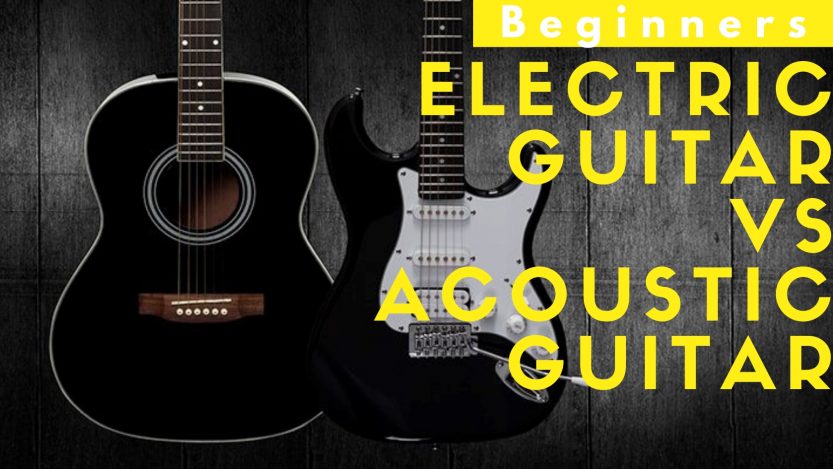When it comes to learning to play the guitar, we are often confronted by the question of whether to start with an acoustic guitar or go directly for an electric guitar. Beginners are usually faced with this kind of dilemma. Not only is the guitar a daunting instrument to learn, but the complicated concepts of playing the instrument can be quite difficult. Some will argue that going straight for the electric guitar would be a definite solution due to its simplicity, thus enabling you to learn more about the instrument. However, others would also argue that taking up lessons using the acoustic guitar is the more reasonable and practical approach.
The instrument that you choose heavily depends on what you want to know and learn about. There is no right or wrong answer to this dilemma. In this article, we learn the difference between the acoustic guitar and electric guitar, the different techniques that make them different, and many more.
Acoustic Guitar vs. Electric Guitar
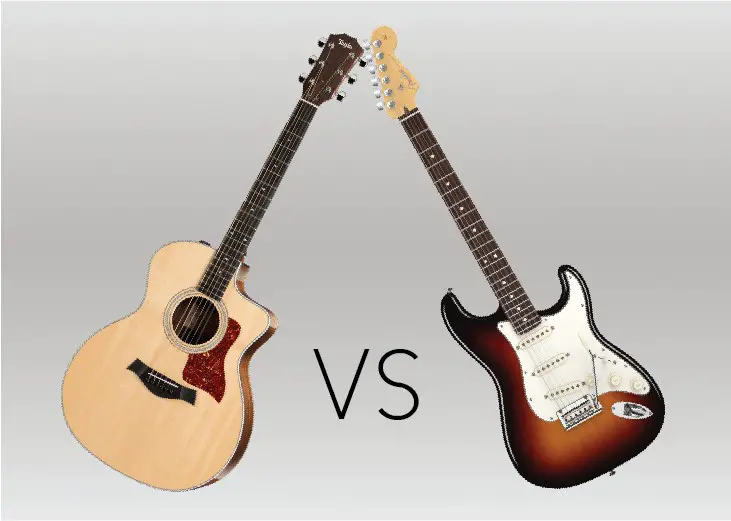
First, let us get to know the acoustic guitar. The acoustic guitar is a great instrument for beginners since it is a very simple instrument. It is easy to use, and it has everything to do with learning the basics of the instrument. There are no wires or plugs that will complicate things. All you need to focus on is to learn how to play the guitar and nothing else.
Acoustic guitars do offer simplicity, but that does not mean that electric guitars are far more difficult to learn. They are about the same; however, it all comes down to preference. One might be intimidated to look and take up an electric guitar due to its switches and wires; however, they look and function almost the same as the acoustic guitar.
Differences Between Acoustic and Electric Guitars
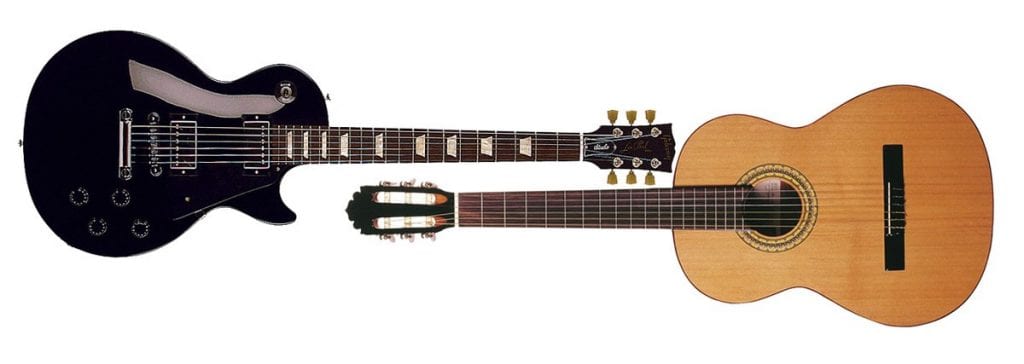
Body
For a beginner to fully understand both instruments, we will need to determine how different these instruments are and what they can and cannot do. Acoustic guitars have a hollow body where the vibration from the strings passes through it. The sounds resonate within the hollow body, thus amplifying it. The sound then exits through the hole in the middle of the guitar. Electric guitars, on the other hand, do not have a hollow body or a soundhole. Instead, they use an electric amplifier to produce the sounds when the strings are played.
Size and Weight
Electric guitars may seem smaller, but they are fully made of materials that are quite heavy. This makes electric guitars very difficult to hold and may require some time to adjust for the beginner. Acoustic guitars are much larger, but they are commonly made of lighter wood and have a hollow body. They are generally much lighter than the electric guitar.
Depending on the type of wood being used to make the guitar body, electric guitars usually weigh around 6 to 12 pounds, especially when they are made of mahogany. Acoustic guitars are typically lighter as the hollow body hence letting you play the guitar for hours on end without straining your back and legs.
Strings
Acoustic guitars need to have heavy steel strings to vibrate stronger and create a louder sound. This means that you will need to hold and strum the strings harder to create the vibration. There are some variations to the strings of an acoustic guitar. Some choose lighter nylon strings, but they often result in a more subdued tone.
Tone
Acoustic guitars have a singular tone and are only differentiated by the materials and size of the acoustic guitar. Meanwhile, electric guitars have volume knobs and multiple pickups, as well as effects that will help keep the tone fresh. You have endless possibilities with the electric guitar.
Music
Acoustic guitars are limited with the lack of amplification; hence they are usually relegated to country, pop, and folk. Electric guitars have effects that help the guitarist play a different genre of music, making it a very versatile instrument to play.
Pros and Cons of Learning To Play Acoustic and Electric Guitars
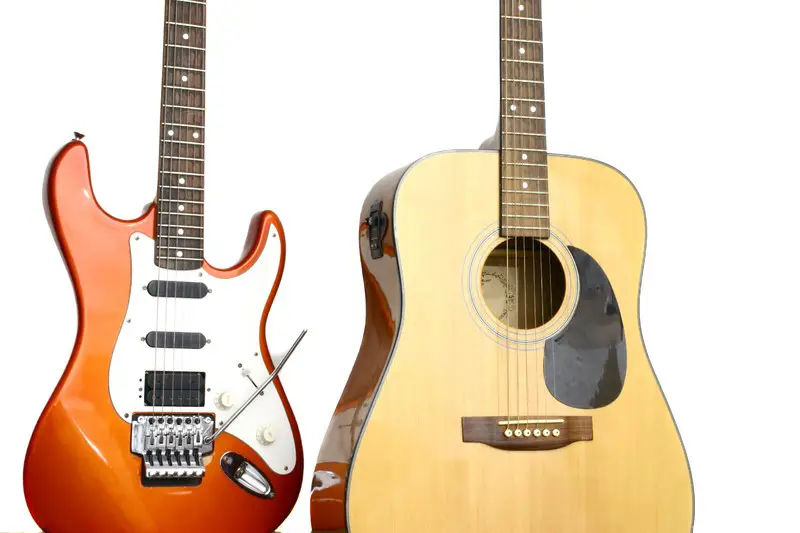
Learning how to play the guitar can be very difficult, depending on your learning capabilities, experience, and many other factors. One of the major factors in properly learning how to play the guitar is choosing the right instrument. We discuss the pros and cons of learning each specific type of guitar. This way, you get to know the difference between the two and make a sound and educated decision on which kind of guitar you should be purchasing to learn how to play the guitar.
Electric Guitar
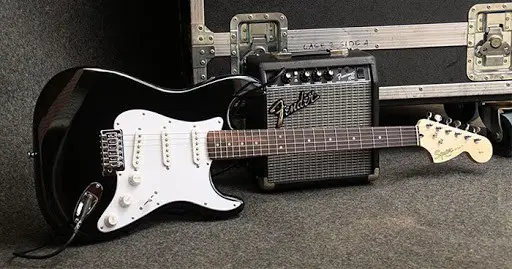
Pros
The strings on electric guitars are far softer than the acoustic version; hence they are much easier and comfortable to play, especially for beginners who have not yet developed their tolerance for the strings. Playing barre chords are also very simple and easy for electric guitars as they use lighter strings. Lastly, you can practice using the electric guitar even at home by using a headphone into the amplifier so you won’t be disturbing anyone.
Cons
Electric guitars do need to have amplifiers for you to hear what you are playing, which may cost you more than what you have bargained for. Additionally, finding the right tone may not always be easy for beginners, as they will also need to know how to operate the amplifier. Playing an electric guitar exclusively also means that you are restricted to only playing that same instrument as the tone and sound are largely different from an acoustic guitar.
Acoustic Guitar
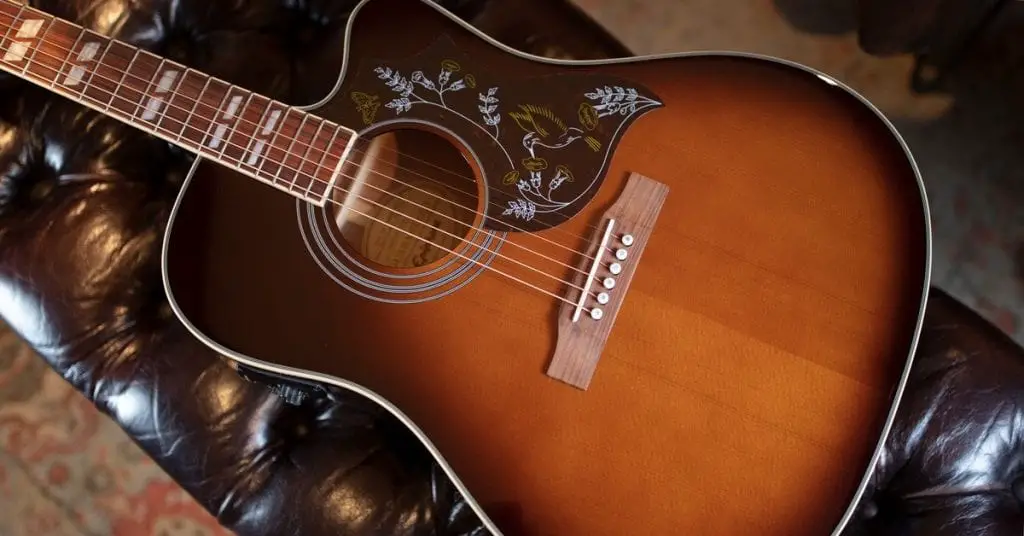
Pros
Same with electric guitars, there are highlights and things that only acoustic guitars can do that electric guitars are can’t. The first thing that every beginner should know when it comes to an acoustic guitar is its simplicity. You immediately get to know the guitar as soon as you begin to play it. There are no wires or cables or amplifiers to learn to operate. You simply get to play the guitar and learn from it. Let the calm and soothing sounds of an acoustic guitar fill the room.
Cons
While it does have a soothing factor, acoustic guitars do take time to get used to, especially with your fingers. The strings are much thicker and tougher, so you end up having to take your fingers off them for quite some time if you are not yet used to it. This can be relieved by continuously playing and learning the guitar since you will surely develop calluses that prevent the strings from hurting. Tougher strings also make some chords harder to play; this means that there will still be limitations to what you can play with the acoustic guitar.
Acoustic guitars are made of wood, so they are more likely to be fragile than electric guitars. Although they are not quite as expensive as electric guitars, all the money you saved up should not go to waste when purchasing an acoustic guitar only for it to shatter into pieces. Extra care is needed when you own an acoustic guitar.
Conclusion
Now that you have an idea of what each type of guitar brings to the table, the ultimate question is – which one is better for beginners? The short answer is – it depends. You will still need to ask yourself what kind of music do you like to play. If you find yourself having an interest in rock music, then the electric guitar should help you learn how to play the guitar and get to know the genre well. On the contrary, if you are into folk and country songs, then the acoustic guitar should be your partner.
While the instrument does have its pros and cons and certain limitations, there is no limit to what you can do with both guitars. Starting with an acoustic guitar does not mean you will only be limited to playing it. The further you develop an interest in music, the more natural it is to seek more ways to learn different instruments.
What this all boils down to is preference. Some teachers would often recommend you to pick up an electric guitar as they find it easier to learn while others tell you to go for the acoustic guitar as they are much cheaper and offer more complexities in playing. Whether you are up for the challenge in learning to play the guitar or simply go for the more practical and easier route, it is all up to you.
However, like all other world-famous guitarists, it will take time and dedication for you to learn how to play the right kind of guitar. To find your style in playing the guitar, you will need to invest a lot of time and effort to learn to master it and control it. Learning to play takes dedication and perseverance. You will encounter a lot of difficulties and problems along the way, but to get pass through these challenges will require you to be persistent. People who stick with their guitar through tough times always make it through and find themselves building towards an impressive set of skills.

